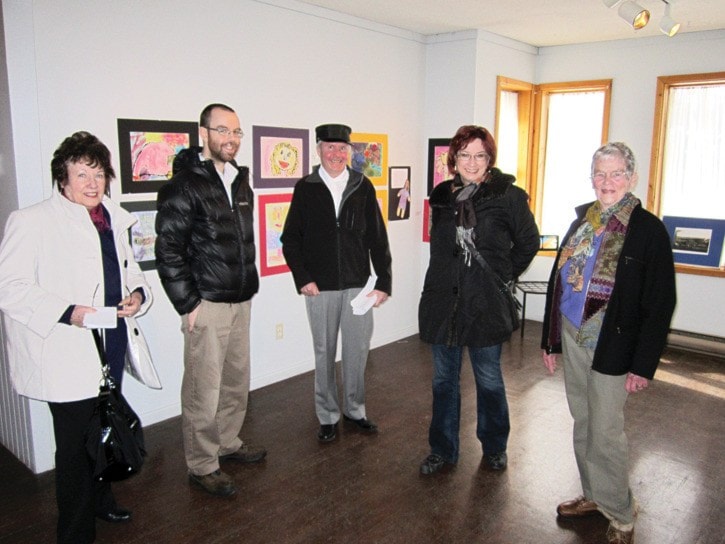The Station House Gallery hosted two days of informal guided tours last week to celebrate Heritage Week.
Gallery manager Diane Toop says visitors were treated to tours with Libby Abbott who grew up in the former Pacific Great Eastern Railway station house from 1930 to 1944.
Abbott had great stories to share, Toop says.
She spoke about a winter’s day when she was about nine years of age, and was sledding down Oliver Street.
“She was feeling quite smug and waving at everyone in the businesses as she slid by and then realized that she couldn’t stop,” Toop says. “Much to her chagrin (and some loose teeth) she hit the boardwalk that was then outside the Station House.”
Libby’s father, Edward Howard-Gibbons, came to Williams Lake as the station master in 1929.
Libby’s mother, Edith, came a year later with three-year-old Libby and her older brother Austin.
Edith had refused to come until there was indoor plumbing installed. Youngest son, John, was born three years later.
Libby’s family lived in the building until she was 17.
Trains arrived in Williams Lake on Tuesday and Friday mornings at 10 a.m. and returned from Quesnel at 8 p.m. the same day.
“When the trains arrived, they carried everything for the town — passengers, cows, freight, all the town’s needs,” Toop says. “Everyone in town came down to see who was arriving and departing, it was the place that people came together and visited.”
The gallery tours were hosted by Clayton Allen, who took the brave ones down into the basement to see the furnaces that have been keeping the building warm for many years.
“Visitors were shown how the building was divided into the original rooms, where windows/doors were at that time and old photos were on display,” Toop says.
“This week truly brought an understanding of how this building was such an integral part of the beginnings of Williams Lake, how well used the building was and we are happy that our society took on the job of maintaining and preserving such an important part of our past.
“The Station House was proud to be a part of Heritage Week and is excited to have more Heritage sites on the BC Heritage Registry.”
In 1919, the Pacific Great Eastern Railway linked Williams Lake to the rest of the province.
The station house was completed in 1920. The railroad built the major stock yards, forming a hub for cattle trade in the region. Williams Lake prospered, developed and fanned out from a road house owned by Constable William Pinchbeck.
The original station house was vacated when a new control centre was built on its current site in the Cottonwood Industrial site. In the late 1970s, the original PGE station house was a boarded up, unused building (except for the waiting room and small ticket master office) in a state of disrepair.
A group of people who realized how imperative it was that one of the few historic buildings that Williams Lake had left be saved, formed the Station House Society.
The society was formally established in 1981, a lease was negotiated with the owner B.C. Rail and the society got to work fundraising.
After much down and dirty labour, business donations, bake sales etc. the building was brought back to its former glory.
It was during this time that the idea/plan to use the building as a community public art gallery came into focus.
More hard work and fundraising ensued to transform the interior to a working gallery and the name was then changed to the Station House Studio & Gallery Society.
In 1983, the Gallery had its first exhibition with artist Harvey Overton and very shortly after that the Gallery Shop was opened to promote and sell local artist’s works.
